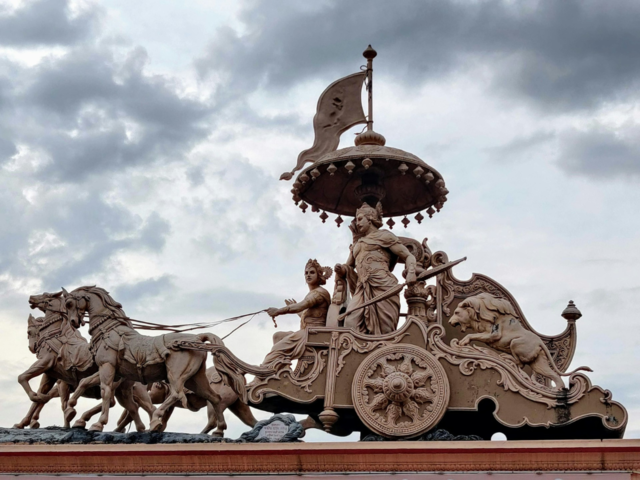
Shashwat Das, Founder, Almond Branding
The secret anti-ageing recipe for your brands.
Aug 5, 2020, 10:00 IST
brands
How to prevent a brand from ageing?
- Losing relevance can not only overthrow you from your leadership position but also throw you out of business.
Shashwat Das , Founder,Almond Branding shares the secret anti-ageing recipe for your brands so that they remain young forever.
The lyrics that Dylan wrote are relevant for all times. In every era, they remind us of how fast things change, evolve and keep step with the ceaseless turn of the wheels of time.
Well, if Dylan was referring to how we should keep moving and change with the times to stay relevant, so it is with brands.
But what is a brand?
In simple terms, it's a product that has over time acquired an identity. A meaning. A purpose. It has created a need, a following and most importantly, earned the trust of people. Think of it as a lifeform. Unicellular and a nebulous mass at first. Slowly taking shape with identifiable features. It goes out into the world, makes the right noises and captures attention. Here I am, it claims. People notice and there is a gradual uptake. Time goes by. Life changes. The environment that the brand created for itself slowly changes. If the brand adapts and heeds those changes, it stays relevant. Or fades away like a tune you can't recall anymore.
What is
Say we map out the attributes of society at large. Or a section of the society, which is the target market for a brand. We do the same attribute exercise for the brand itself. Do they correlate? Do they reflect each other? If they do, the brand has stayed relevant. An example: Cars are products that have to stay with the times through design, materials, technology, etc. and in the process, remain true to their purpose.
This evolution is how they stay connected to how people evolve. They learn the habits and behaviour of the people who drive them and the environment too. For instance, they predict what roads will be like in the future - that decides how their tyres, suspension, brakes, seats and drivetrain will be like. It suggests new ways of design and interaction. The brands that don't keep up get left behind. VW, Audi, Maruti are all examples of brands that have withstood the test of time. Those that changed themselves to be modern are Tata, BMW, more recently.
When it comes to mobile phones, Nokia that once ruled the world suddenly became unpopular with the advent of smartphones from Samsung and Apple. The primary reason was that it couldn't keep pace with the rate of innovation of its competitors and adapt to the changing needs of the audience. Losing relevance can not only overthrow you from your leadership position but also throw you out of business.
So, what do we need to keep a brand alive and kicking?
Consumer connect
If you are in the consumer business, you need to know the pulse of the consumer. If possible you need to know before the consumer even starts building a thought. Only then you can be ready with the product that your consumer will need or long for tomorrow.
After the COVID outbreak several brands have quickly adapted their game and have made necessary changes to their product portfolios. For many brands their consumer touchpoints were entirely shut for months. Instead of sitting and lamenting on the same, many of them briskly moved to open new doors and infact started helping the consumers in times of need. That way they remained relevant in the minds of your consumers
Trend tracking
Often it so happens that a brand becomes a massive hit with a particular generation and creates a loyal consumer base. However, it fails to attarct the subsequent generations just because it doesn't speak their language. It dawns a fuddy-duddy image and is often referred to in the past tense as the "grandfather's brand". Unless you are a heritage brand, you can't be speaking a typewriter's language when your consumer is on Instagram.
Trend tracking is a research focussed on trends that identifies the opportunities and threats that arise out of these threats. Once you can track the trends, you can analye their influence on your brand over time, the possible directions of growth to take in future. This was you can think ahead of times and stay relevant to your consumers.
Design and its role
There are various dimensions to design itself. The brand manifesto, once it has been created will largely consist of the following: name, colour, font type, spaces, motion and how it leads to different mediums.
The logo is what everyone recognises to be the first contact of a brand. It’s fundamental. Well, there's a movement among designers to keep a logo sharp, memorable, oustanding and timeless. When a brand creates an identity, it cannot afford to change it daily. The effort is always to preserve its essence and make small but relevant changes.
But what about shop frontages, uniforms, building aesthetics and…
Whoa! Of course everything follows from the design dictate that the brand has set for itself. And as we see, it too can’t be changed ad hoc. One needs to have some foresight here. A future vision about variants, how usage will change (think feature phones to smartphones – size, camera positions, UI, everything changed), how technology may serve up a dollop of usability.
Design allows a brand to reflect its values and behaviour through elements like forms, shapes, colour and movement. You can recognise a brand by its Design language, provided its consistent. This includes type, font, visuals and such. If a friend you know to be a geek, dresses a particular ( geeky!) way, talks in precise grammatical clauses, is really smart, that's his identity. What would happen if one day, suddenly, he gets all buffed up, adopts grunge, starts talking slang and hangs out with truckers! It's going to take a while to accept the changes - if at all!
Brands are no different. They start out with a purpose and a promise. That's sacrosanct. Over time and as people and lifestyles change, it incorporates subtly these very changes in itself too. Design helps in keeping the brand contemporary. Only if it needs to. There are some that are staunchly ancient. But it's their DNA. maybe they are agarbattis, clinging on to tradition.
Conclusion
There is no anti-ageing cream.
Design is but one aspect of keeping brands from ageing. It really is the meaning it brings to our lives. That is what dictates its success. But like in life, everything has a shelf life. Everything ages, eventually. Those that stay with the times seem immortal. But then they’ve earned the right to be called ageless.
But change doesn't have to be just for the sake of change. If the brand owners do not have a compelling answer to the question, "Why are we revamping the brand?", they'd be better off leaving it alone.
INSIDER INTELLIGENCE REPORTS







